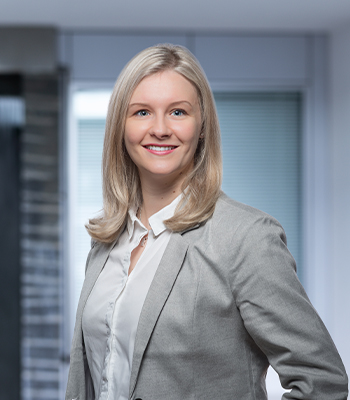30 years' experience in machine construction: why REITZ Natursteintechnik measures with absolute accuracy
In our new blog series on everything to do with granite, REITZ Natursteintechnik today is focusing on superfinishing and precision assembly. We talked to René Maschlanka about exactly how it all works.
"50 inclination balances and 21 autocollimators in a 4,000-square-metre measuring room." (René Maschlanka)
Christina: Hello, René! Lovely to see you. In this new REITZ blog, I'd like to talk to you about superfinishing and precision assembly. What exactly do the two terms mean?
René Maschlanka: Hello, Christina! Lovely to see you, too. Well, let's start with superfinishing. It takes place right at the end, and is important because we can only achieve a limited accuracy on our CNC processing machines because of their geometry. The manual post-processing then takes place in the micro range using various silicon carbide and diamond powders, and lapping plates.
Christina: Wait a minute. What exactly is a micro?
René Maschlanka: Mathematically, it's a thousandth of a millimetre. Here's an example to make it a little clearer. Picture a human hair. A human hair is between 50 and 80 micrometres thick. In a blond hair, a micro is a fiftieth, and a black one is an eightieth.
Christina: That really isn't a lot. How accurate do the parts need to be in the end?
René Maschlanka: It depends on the customer. There are DIN regulations for planarity and angle accuracy. For instance, DIN 876 applies for planarity, and a distinction is then made between various grades. They range from grade 2 to 1, grade 0 and 00.

Christina: Ah, I see. So with these grades, more is better and less is worse, right?
René Maschlanka: Yes, that's right. The higher the grade, the higher the tolerance. Think of it like this: at grade 00 we have a planarity requirement of about 4 micrometres on an area of 1x1 metres.
Christina: So you really do have to work with absolute precision. But then again, that's your core business. So how is all this measured? I wouldn't think you'd get very far with a ruler, would you?
René Maschlanka: Well, that would depend on the ruler. If I had a very accurate one made of granite in the µ range, then I could use that as a reference. And you'd then measure from that ruler. We at REITZ work with various electronic and optical measuring devices that measure the angles. Picture a circle and divide it into angular seconds. You'll have 3600 of them. Calculated over a radius of 1 metre, this angular second will make a height difference of 4.84 micrometres at 1 metre.
Christina: So you need something extremely accurate to measure with?
René Maschlanka: We certainly do, and lots of them. We have a total of 50 inclination balances and 21 autocollimators.
Christina: And can the customer check the accuracy of your work at the end?
René Maschlanka: Yes, he can. Provided he uses the same measuring equipment and works in an air-conditioned environment with stable temperatures.

Christina: OK, so now we're all clear about superfinishing. Let's talk about precision assembly now. How exactly do you do it, or what exactly do you do?
René Maschlanka: Well, precision assembly is the continued assembly for superfinishing. There are two ways of producing the final accuracy of a plant or machine. One concerns extreme accuracy in the components, so that everything is already accurate after assembly. Or in the range of the highest precision that can also be achieved by the assembly. This is where the parts are assembled and, since each part has defects and they continue to add up, we can post-lap accordingly in assembly to create the required accuracy.
Christina: I see. You've already mentioned that you have lots of measuring instruments. Where do you keep them all?
René Maschlanka: They're all in our air-conditioned measuring rooms. All the components that are measured are taken there before superfinishing, and need to stay there for at least 24 hours before we start working on them.
Christina: So in theory, our viewers and listeners can have a look around your premises. I mean, you offer tours, don't you?
René Maschlanka: Yes, we do. And interested parties and customers are most welcome to look around our production department and the 4,000-square-metre measuring room for themselves.
Christina: That sounds really interesting. But to finish, tell us again very quickly why you're the perfect partner for superfinishing and precision assembly.
René Maschlanka: We have 30 years' experience in machine construction. Our staff are all very well trained, and of course here at REITZ work with ultra technical conditions, the measuring equipment and rooms.
Christina: OK – well, thank you very much for all your wonderful answers to my questions.
René Maschlanka: My pleasure.
Christina: And see you next time. It'll be worth it!

